Heat Climate

What is the relationship between heat waves and mortality rates ?
The text discusses the relationship between heat waves and mortality rates, highlighting various factors that contribute to this complex relationship. It emphasizes the increased risk of heat-related illnesses like dehydration, heat exhaustion, and heat stroke during heat waves, which can lead to serious complications and death if not treated properly. The article also notes the impact of heat waves on chronic health conditions like cardiovascular disease, respiratory problems, and diabetes. Age-related vulnerabilities are discussed, with older adults being particularly susceptible due to physiological changes and a higher prevalence of chronic health conditions. Socioeconomic factors are identified as crucial determinants of an individual's vulnerability to the adverse effects of heat waves, including housing quality, healthcare access, education level, and employment status. The text concludes by stressing the importance of public health strategies aimed at reducing the impact of heat waves on vulnerable populations.

What role does global warming play in climate predictions ?
The text discusses the role of global warming in climate predictions, emphasizing its multifaceted impact on various aspects of the Earth's climate system. Key points include increased temperatures leading to melting ice, rising sea levels, and changes in precipitation patterns; intensified extreme weather events like heat waves and hurricanes; ocean acidification harming marine life; alterations in ecosystems affecting animal migration and habitats; agricultural impacts such as changing crop yields and growing seasons; and human health concerns including the spread of diseases and heat-related illnesses. The conclusion stresses the importance of considering these factors in future climate projections and mitigating the effects of global warming through reduced greenhouse gas emissions.
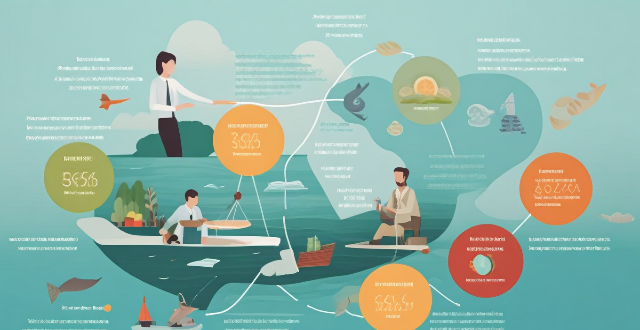
What are the implications of not meeting climate targets ?
The article discusses the implications of not meeting climate targets, including rising sea levels leading to coastal erosion and loss of habitat; extreme weather events causing heatwaves and storms; biodiversity loss resulting in species extinction; economic disruption due to disaster recovery costs and loss of productivity; health impacts such as heat-related illnesses and air quality issues; food security concerns from reduced crop yields and water scarcity; and displacement and migration caused by climate change. It emphasizes the importance of meeting climate targets to mitigate these adverse effects on the environment, economy, and society.

What are the long-term implications of neglecting climate adaptation efforts ?
Neglecting climate adaptation efforts can have far-reaching and long-lasting implications for our planet, its ecosystems, and human societies. These implications are multifaceted and interconnected, affecting various aspects of life on Earth. Below, we will explore some of the key long-term implications in detail: ### **Environmental Consequences** #### *Loss of Biodiversity* - **Habitat Destruction**: Rising temperatures and changing weather patterns can disrupt habitats, leading to a decline in biodiversity. - **Species Extinction**: Some species may not be able to adapt quickly enough to the changing conditions, resulting in extinction. #### *Ocean Acidification* - **Marine Ecosystems**: Increased carbon dioxide levels in the atmosphere lead to ocean acidification, which harms marine life, especially shellfish and coral reefs. ### **Economic Impacts** #### *Agriculture and Food Security* - **Reduced Crop Yields**: Changes in temperature and precipitation patterns can negatively affect crop yields, leading to food scarcity and price hikes. - **Livestock Production**: Heat stress and changes in feed quality can impact livestock production, further exacerbating food security issues. #### *Infrastructure Damage* - **Coastal Erosion**: Rising sea levels can cause coastal erosion, damaging infrastructure such as roads, buildings, and energy facilities. - **Extreme Weather Events**: More frequent and severe weather events like hurricanes, floods, and droughts can cause significant damage to infrastructure and lead to costly repairs. ### **Social and Health Impacts** #### *Displacement and Migration* - **Climate Refugees**: As living conditions deteriorate due to climate change, people may be forced to leave their homes, leading to mass migration and potential conflicts over resources. - **Urbanization**: People may move to cities seeking better living conditions, which could strain urban infrastructure and services. #### *Health Risks* - **Heat-related Illnesses**: Higher temperatures can lead to heat stroke, dehydration, and other heat-related illnesses. - **Spread of Diseases**: Warmer temperatures can expand the range of disease-carrying organisms like mosquitoes and ticks, increasing the risk of diseases like malaria, dengue fever, and Lyme disease. ### **Summary** Neglecting climate adaptation efforts has far-reaching consequences that extend beyond environmental degradation to include economic instability, social unrest, and public health risks. It is crucial for governments, businesses, and individuals to take proactive steps towards climate adaptation to mitigate these long-term implications and ensure a sustainable future for all.

How do urban greening projects influence city temperatures and heat islands ?
Urban greening projects, such as planting trees and creating parks, can help reduce city temperatures and mitigate the effects of urban heat islands. These projects provide shade, reduce heat absorption by buildings and roads, and promote evapotranspiration, all of which contribute to cooler city environments. By increasing vegetation in cities, urban greening initiatives can also help reduce the intensity of urban heat islands, making cities more comfortable for residents. As our world continues to urbanize, prioritizing urban greening initiatives is essential for creating healthier and more sustainable cities for future generations.

How can I identify and respond to signs of heat exhaustion or heatstroke ?
Heat exhaustion and heatstroke are two serious conditions that can occur when the body overheats, often due to prolonged exposure to high temperatures and dehydration. Recognizing the symptoms of each is crucial for timely treatment. Heat exhaustion symptoms include heavy sweating, weakness, dizziness, nausea, muscle cramps, pale skin, headache, confusion, and rapid heartbeat. Heatstroke signs involve fever, altered mental state, hot dry skin, rapid breathing, racing heart rate, nausea and vomiting, severe headache, and possibly seizures. Immediate action is required: for heat exhaustion, move to a cooler area, hydrate, cool down, and rest; for heatstroke, call emergency services, move to shade, lower body temperature, lighten clothing, stay hydrated, and monitor vital signs. Prevention involves avoiding strenuous activities during peak heat, wearing appropriate clothing, staying hydrated, and recognizing personal limits.
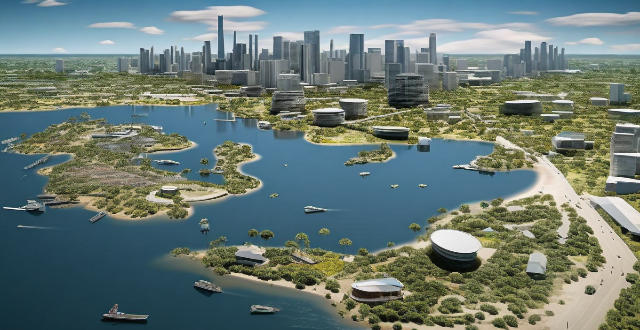
In what ways do urban heat islands influence city planning and design ?
Urban heat islands, areas within cities that are significantly warmer than surrounding rural areas, have a significant impact on city planning and design. This phenomenon is primarily due to the concentration of buildings, pavements, and other infrastructure that absorb and retain heat. The impact of urban heat islands extends beyond just temperature differences, influencing various aspects of city planning and design. These include increased energy consumption, public health concerns, water management, green spaces and landscaping, transportation planning, building materials and construction techniques, community design and zoning, climate change adaptation, and public awareness and education. Addressing these challenges requires a multifaceted approach that considers energy efficiency, public health, water management, green spaces, transportation, building materials, community design, climate change adaptation, and public awareness. By taking these factors into account, cities can become more livable, sustainable, and resilient in the face of rising temperatures.
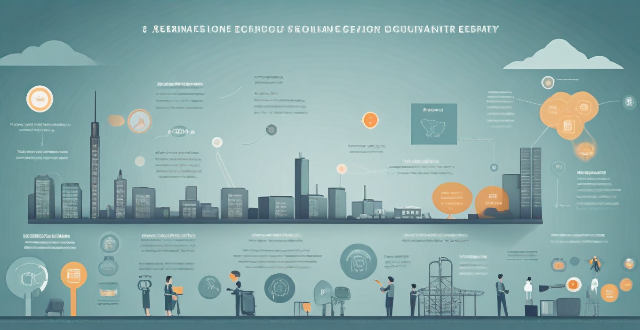
How can climate services support policy making for climate change ?
Climate services support policy making for climate change by providing scientific evidence, assessing impacts and risks, informing mitigation strategies, enhancing capacity building, and facilitating international cooperation. They provide decision-makers with relevant, timely, and reliable information on the state of the climate system, its variability, and its future projections. This information is essential for developing effective policies to mitigate and adapt to the impacts of climate change.

How does climate change impact social justice ?
Climate change has significant impacts on social justice, affecting marginalized communities, health outcomes, economic stability, migration patterns, and gender equality. Mitigation efforts to reduce greenhouse gas emissions and adaptation strategies to build resilience against the impacts of climate change are necessary to create a more equitable future for all.

What is the role of global warming in climate disasters ?
The article discusses the significant role of global warming in climate disasters, highlighting its impacts on extreme weather events, sea level rise, ecosystems, and food security. It emphasizes the importance of taking action to mitigate these effects through strategies such as reducing greenhouse gas emissions, adapting to changing climate conditions, supporting research and innovation, and encouraging international cooperation.
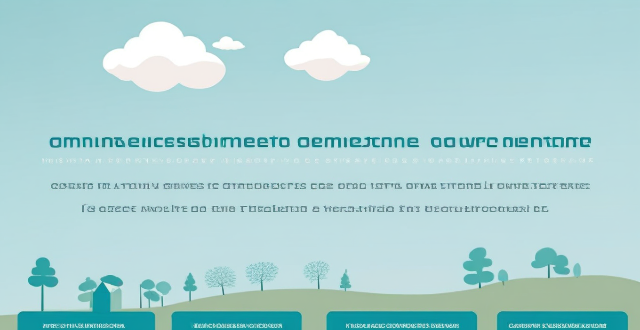
What are the potential consequences of ignoring climate change ?
The text discusses the potential consequences of ignoring climate change, including environmental effects such as extreme weather events and loss of biodiversity, economic disruptions like damage to agriculture and infrastructure, public health issues including the spread of diseases and heat-related illnesses, and social impacts such as forced migration and reduced quality of life. It emphasizes the importance of addressing climate change to avoid these catastrophic implications for our planet and all life on it.

What are the benefits of taking climate action ?
Taking climate action is crucial for the survival and well-being of our planet and its inhabitants. Here are some of the benefits that come with taking climate action: 1. Health Benefits: - Improved Air Quality: Reducing greenhouse gas emissions can help improve air quality, leading to fewer respiratory problems and a lower risk of lung cancer. - Reduced Heat-Related Illnesses: Taking steps to mitigate climate change can help reduce the frequency and intensity of heatwaves, which in turn reduces the risk of heat-related illnesses like dehydration and heat exhaustion. 2. Economic Benefits: - Job Creation: Investing in renewable energy sources like wind and solar power creates jobs in manufacturing, installation, and maintenance. - Cost Savings: By reducing our dependence on fossil fuels, we can save money on energy bills and reduce the economic impact of fluctuating oil prices. 3. Environmental Benefits: - Biodiversity Preservation: Taking climate action helps protect habitats and ecosystems, preserving biodiversity and preventing species extinction. - Water Conservation: Mitigating climate change can help preserve water resources by reducing the severity and frequency of droughts. 4. Social Benefits: - Community Resilience: Taking climate action can help build more resilient communities by preparing for and adapting to the impacts of climate change. - Public Awareness: Climate action raises public awareness about environmental issues, promoting a culture of sustainability and encouraging individuals to make eco-friendly choices in their daily lives. In conclusion, taking climate action offers numerous benefits that extend beyond just protecting the environment. It's essential for our health, economy, and social well-being. By working together to reduce greenhouse gas emissions and adapt to the changing climate, we can create a more sustainable and resilient future for all.

How can developing countries benefit from climate information sharing ?
Climate information sharing is vital for developing countries to address climate change challenges, offering benefits such as improved agricultural planning, disaster risk reduction, public health protection, economic development, and informed policy-making. By utilizing this data, these nations can adapt to environmental changes, build resilience, and ensure sustainable growth.
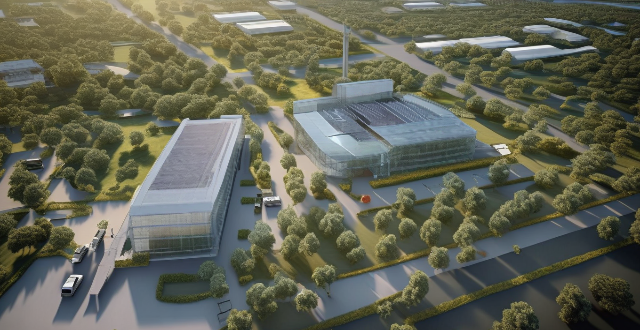
What is the role of renewable energy sources in energy-efficient buildings ?
Renewable energy sources play a crucial role in the construction and operation of energy-efficient buildings, providing clean, sustainable power that reduces reliance on fossil fuels and helps mitigate climate change. Solar energy is one of the most popular renewable energy sources used in energy-efficient buildings, harnessing the power of the sun to generate electricity or heat water for use in buildings. Wind energy converts the kinetic energy of wind into electricity, which can then be used to power buildings. Geothermal energy involves harnessing the heat from the earth's core to provide heating and cooling for buildings. Biomass energy uses organic materials such as wood chips, crop waste, and animal manure to generate heat and electricity for buildings. Hydropower involves using the energy of moving water to generate electricity. Incorporating these technologies into building designs and operations can create more sustainable and environmentally friendly structures that benefit both people and the planet.
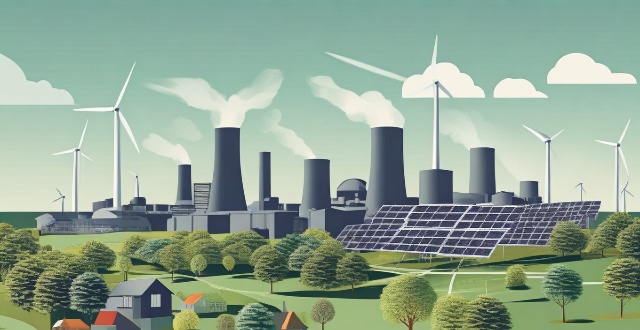
What are the alternatives to fossil fuels for energy production ?
The article discusses various alternatives to fossil fuels for energy production, including solar energy, wind energy, hydroelectric power, geothermal energy, biomass energy, and nuclear energy. It explains the working principles of each alternative and their advantages and disadvantages. The main advantage of these alternatives is that they produce clean energy with minimal greenhouse gas emissions, reducing the impact on the environment and climate change. However, some of them require significant investment and infrastructure development, while others have safety concerns or limited availability. Overall, the article highlights the potential of these alternatives in providing sustainable and reliable sources of energy for the future.

What are some examples of recent technological advancements in renewable energy sources ?
Renewable energy sources have been gaining momentum in recent years due to the increasing awareness of climate change and the need for sustainable alternatives to fossil fuels. Here are some examples of recent technological advancements in this field: - Solar Energy: Perovskite solar cells, bifacial solar panels, concentrated solar power (CSP) systems with efficient heat transfer fluids and storage systems. - Wind Energy: Floating wind turbines designed for deep waters, smart grid integration with improved forecasting techniques, demand response programs, and energy storage solutions. - Hydropower: Run-of-river systems that minimize environmental impact by utilizing natural river flow, low head hydropower installed in existing water infrastructure without significant modifications. - Geothermal Energy: Enhanced geothermal systems (EGS) with improved drilling techniques and efficient heat exchangers, low-temperature geothermal heat pumps harnessing warmth from Earth's surface even in colder climates. - Biomass Energy: Anaerobic digestion process breaking down organic matter to produce biogas for electricity generation or as a natural gas substitute, torrefaction converting biomass into coal-like substance called biocoal with higher energy density and potential applications in replacing coal in power plants and industrial processes.

Why is it important for individuals to take action on climate change ?
Climate change is one of the most pressing issues facing our planet today, caused by human activities such as burning fossil fuels and deforestation. Taking action on climate change is crucial for individuals due to its impacts on health, economy, environment, social justice, and moral responsibility. By making small changes in daily lives and advocating for systemic change, everyone can play a role in addressing this urgent issue.
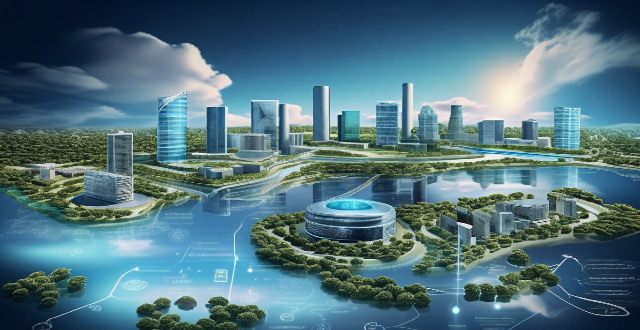
What is the future of Climate-Smart Technology ?
The future of climate-smart technology is expected to be transformative, offering numerous ways to mitigate climate change and adapt to its effects. Key areas of development include renewable energy, energy efficiency, carbon capture and storage, water management, and agriculture. Emerging technologies such as artificial intelligence, blockchain, and the Internet of Things also have significant potential in this field. However, challenges such as cost, infrastructure, regulation, and public acceptance must be addressed to ensure widespread adoption and effectiveness.

What are some innovative examples of climate adaptation in developing countries ?
Climate adaptation is becoming increasingly important for developing countries, which often lack the resources to cope with the impacts of climate change. However, these countries are also finding innovative ways to adapt to changing environmental conditions. Here are some examples: 1. Integrated Watershed Management 2. Climate-Smart Agriculture 3. Ecosystem-Based Adaptation 4. Urban Green Infrastructure 5. Community-Based Adaptation
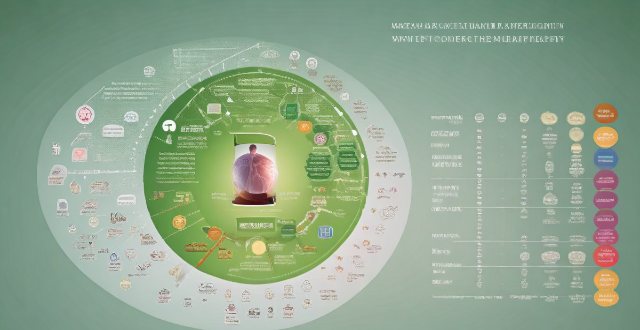
What are the impacts of climate vulnerability on human societies ?
The impacts of climate vulnerability on human societies are multifaceted and can be categorized into various sectors including health, economy, environment, and social structures. The health impacts include an increase in heat-related illnesses and the spread of diseases. The economic impacts involve loss of livelihoods and increased costs. The environmental impacts consist of biodiversity loss and water scarcity. The social impacts include displacement and migration, as well as food insecurity. Addressing these challenges requires coordinated efforts at local, national, and international levels to mitigate greenhouse gas emissions and adapt to the inevitable changes brought about by climate change.

How do climate losses and damages impact human health ?
This article discusses the impact of climate change on human health, highlighting various ways in which climate losses and damages can affect well-being. It covers topics such as extreme weather events causing physical injuries and illnesses, worsening air quality leading to respiratory problems, food insecurity resulting in malnutrition, increased waterborne diseases due to warmer water sources, and mental health issues arising from displacement and migration. The article emphasizes the need for a comprehensive approach to address these challenges, including mitigating greenhouse gas emissions, adapting to changing conditions, and providing support for vulnerable populations.

How do climate adaptation measures vary across different regions ?
Climate adaptation measures are strategies and actions taken to reduce the impacts of climate change on human lives, ecosystems, and economies. These measures vary significantly across different regions due to factors such as geography, climate patterns, socio-economic conditions, and technological capabilities. Coastal and island communities face challenges like sea-level rise, storm surges and hurricanes, and erosion, while arid and semi-arid regions face water scarcity, desertification, and droughts. Mountainous regions face glacier retreat, changes in snowmelt patterns, and landslides and mudflows. Urban areas face challenges like heat island effect, flooding due to impervious surfaces, and air pollution exacerbated by heat waves. Arctic regions face permafrost thaw, changes in wildlife migration patterns, and infrastructure damage due to extreme cold. In conclusion, it is crucial for local governments, international organizations, NGOs, and community members to work together in designing and implementing effective adaptation strategies tailored to their unique circumstances.

What is the impact of climate change on the global economy ?
Climate change affects the global economy in various ways, including reduced crop yields, water scarcity, forest fires, changes in energy production, human health issues, displacement and migration, and insurance and financial risks. Addressing climate change is crucial for both environmental and economic reasons.

How does climate change contribute to the climate emergency ?
The role of climate change in the current climate emergency is significant, driving various environmental issues that pose threats to our planet's health and stability. Key aspects include rising temperatures leading to heatwaves and melting ice, greenhouse gas emissions causing a greenhouse effect, extreme weather events such as intensified storms and altered precipitation patterns, wildfires and land degradation, ecosystem disruptions like biodiversity loss and ocean acidification. These impacts are far-reaching and deeply concerning, requiring urgent action to reduce greenhouse gas emissions and implement sustainable practices.

What is the impact of climate change on children's access to education ?
Climate change affects children's access to education through extreme weather events, health impacts, food security issues, and displacement and migration. These challenges make it difficult for children to attend school or continue their studies. It is crucial to take action now to mitigate the effects of climate change and protect the future of education.
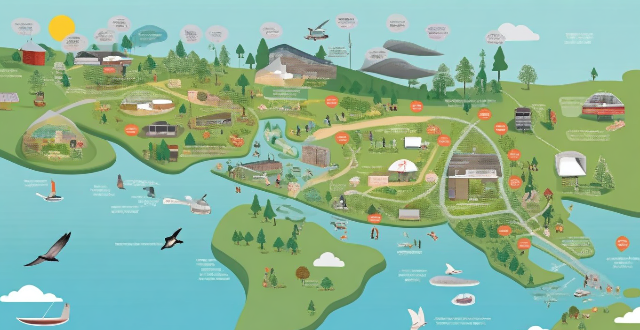
How do extreme weather events affect global climate change ?
Extreme weather events, such as hurricanes, floods, droughts, and heatwaves, have a significant impact on global climate change. They can exacerbate existing climate conditions and contribute to the overall warming of the planet by increasing greenhouse gas emissions, affecting ecosystems and biodiversity, disrupting agriculture and food production, and impacting human health and well-being. It is essential that we work together to mitigate the effects of extreme weather events and address the root causes of climate change to ensure a sustainable future for all.

How does climate change affect the performance of athletes in outdoor sports ?
Climate change significantly impacts outdoor sports by altering temperature, precipitation patterns, and air quality. Athletes face challenges such as dehydration, heat-related illnesses, muscle injuries from cold weather, event cancellations due to heavy rainfall, reduced efficiency in drought conditions, and respiratory problems from increased pollutants. Altered seasons disrupt training schedules and event scheduling. Strategies for adaptation include flexible scheduling, indoor alternatives, advanced performance wear, environmental simulation in training, health education, and readily available medical care during competitions.

How do climate zones impact the design of energy-efficient buildings ?
Climate zones play a crucial role in the design of energy-efficient buildings, impacting heating and cooling needs, insulation and ventilation, orientation and shading, glazing and daylighting, and roofing and water management. By taking these factors into account, architects and engineers can create buildings that are both comfortable and energy-efficient regardless of their location within different climate zones.

What are the implications of climate change for future generations, specifically children ?
Climate change poses significant challenges and threats to future generations, particularly children. The implications of climate change for children are multifaceted and far-reaching, affecting their health, safety, education, and overall well-being. Health implications include increased respiratory problems, spread of infectious diseases, and nutritional deficiencies due to extreme weather events and changing precipitation patterns. Safety risks involve natural disasters and heat stress, while education is affected by disruption of learning and limited access to educational resources. Overall well-being implications include mental health issues, loss of cultural heritage, and economic impacts on families and communities. Addressing these challenges requires urgent action to mitigate the effects of climate change and adapt to its inevitable consequences, ensuring a healthier, safer, and more equitable future for all children.